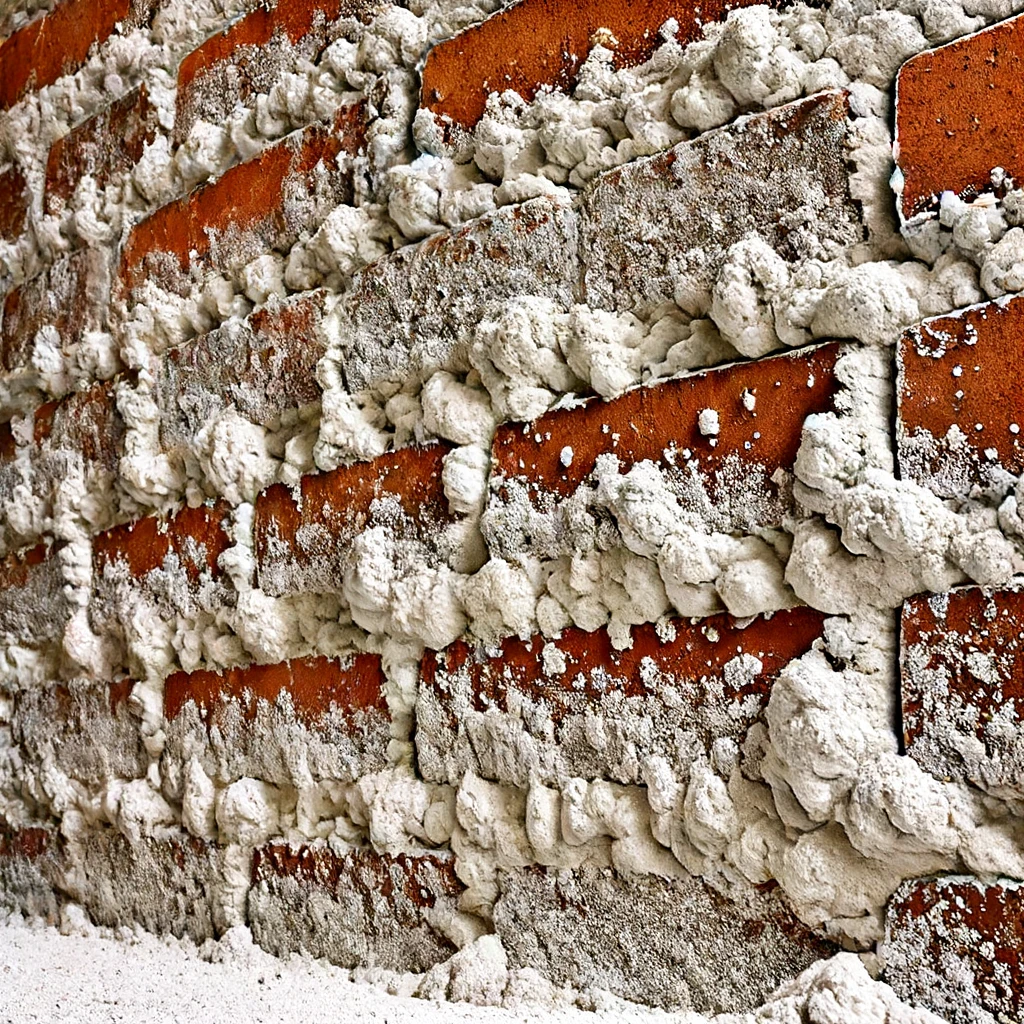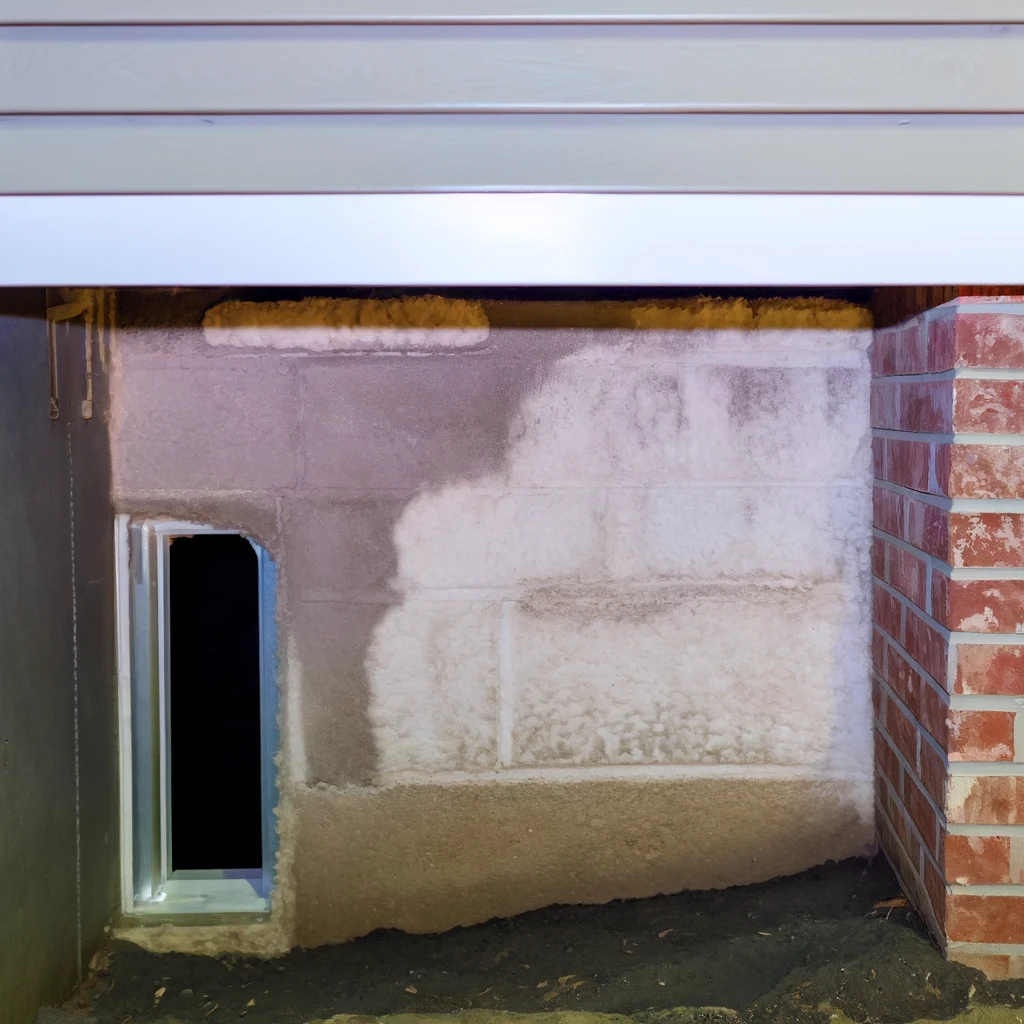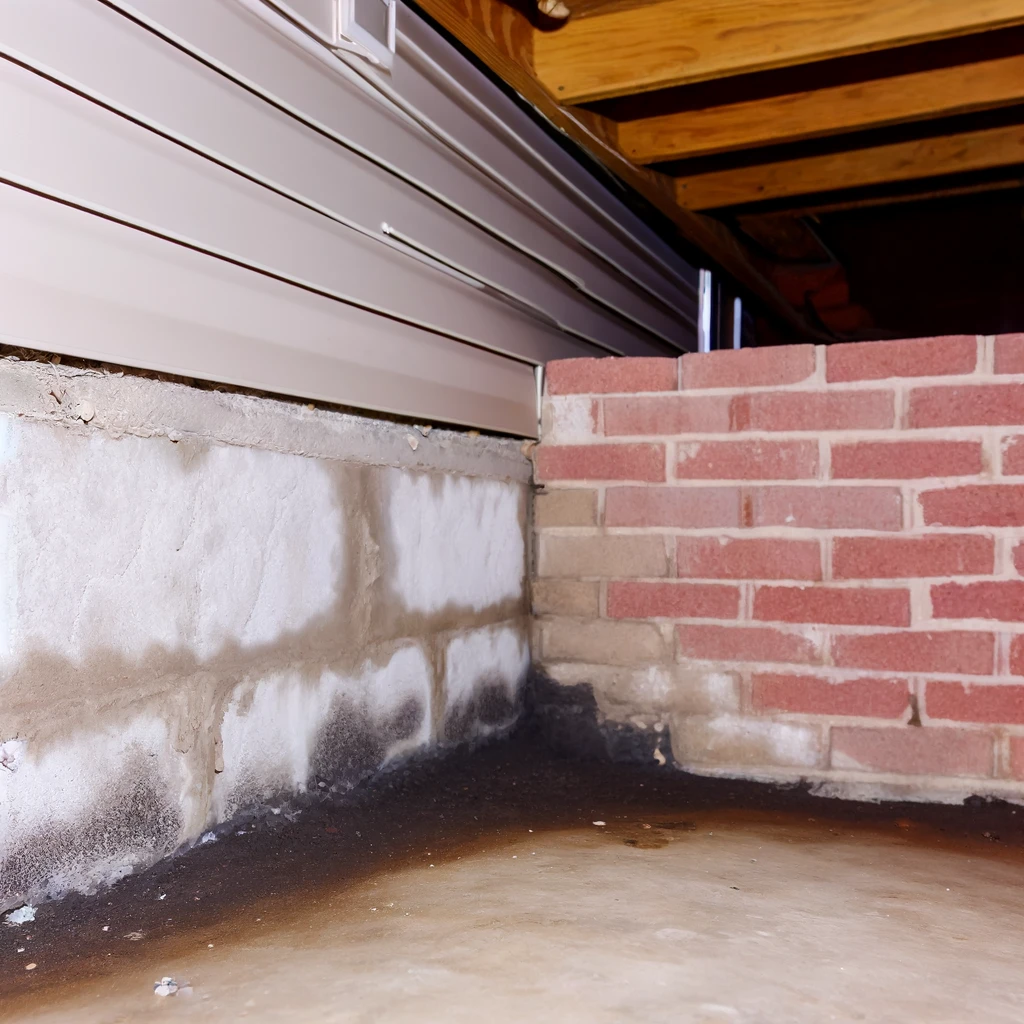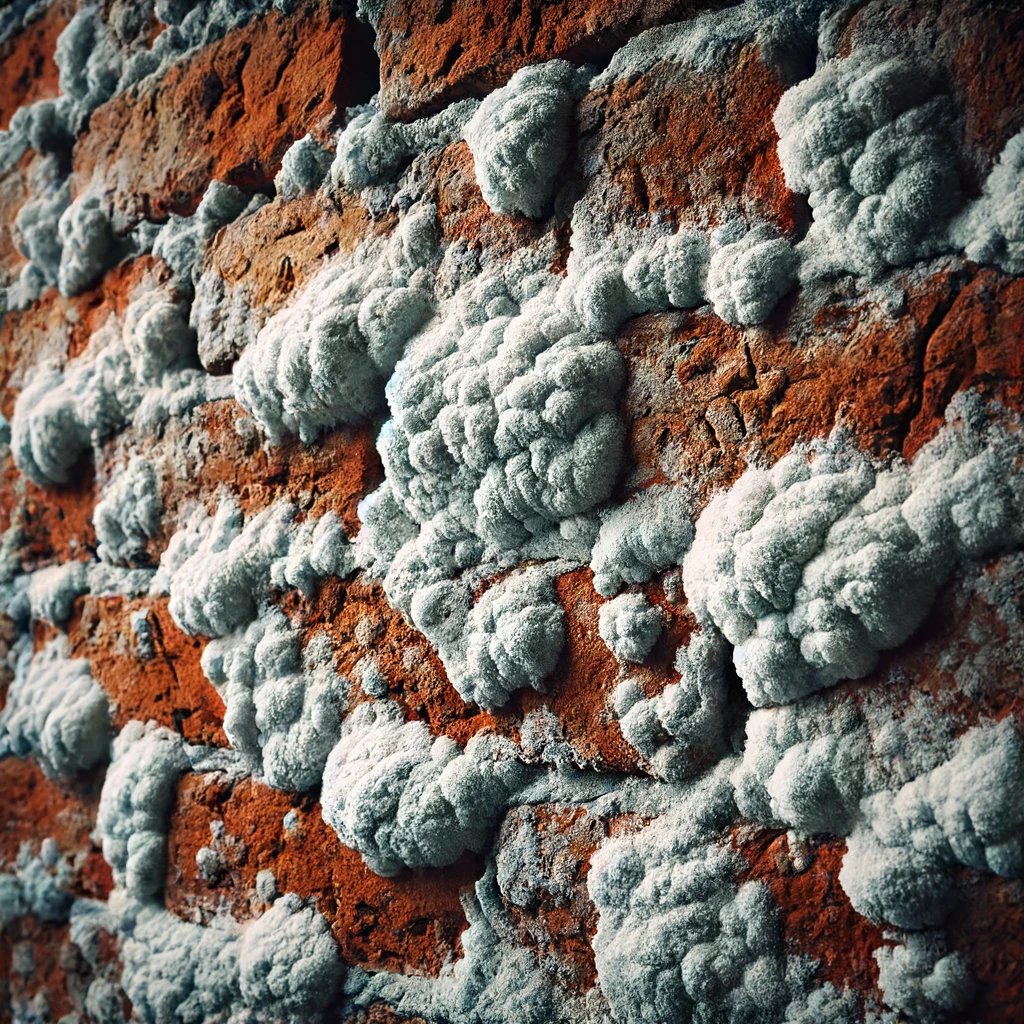Introduction: Efflorescence in Masonry
Ever wondered about the white, powdery substance that sometimes appears on your brick, stone, or concrete surfaces?
That’s called efflorescence, a common issue in masonry.
Next questions: have you been curious about what causes it, how to prevent it, and, if necessary, treat it?
Well, you’re in the right place!
This article guides you through understanding efflorescence in depth. We’ll cover everything from its definition to its causes, the process of how it forms, and, most importantly, practical strategies to prevent and treat it. We’ll also cover the types of materials required for cleaning and maintaining your masonry surfaces, and the product names you should be looking for when purchasing these.
Ready to maintain the quality and appearance of your masonry?
Let’s get going!
Table of Contents
Understanding Efflorescence in Masonry

What is Efflorescence?
Efflorescence is a crystalline deposit of salts often seen on the surface of masonry. It appears as a white, powdery residue on brick, concrete, or stone surfaces.
Causes of Efflorescence
Efflorescence occurs when water is present in the masonry. Here are the primary causes:
- Source of Water: Rain, groundwater, or construction moisture.
- Soluble Salts: Salts that dissolve in water within or on the material.
- Pathway: Movement of water through the masonry to the surface.
How Efflorescence Forms
Efflorescence forms through a process involving three main steps:
- Dissolution: Water dissolves soluble salts in the masonry.
- Migration: Water carrying the dissolved salts migrates to the surface.
- Evaporation: Water evaporates, leaving salt deposits behind.
Preventing Efflorescence
To minimize efflorescence, consider these strategies:
- Proper Drainage: Ensure effective drainage systems to prevent water accumulation.
- Waterproofing: Use water-repellent sealers and coatings.
- Good Construction Practices: Include proper curing of mortar and concrete.
Treatment Options
Treating efflorescence involves cleaning and preventive measures:
- Brushing: Use a stiff brush to remove loose deposits.
- Washing: Employ mild acid or specialized efflorescence cleaners.
- Sealing: Apply sealants to prevent future water infiltration.
Materials Needed for Cleaning
| Material | Description |
|---|---|
| Bristle Brush | For scrubbing the surface |
| Efflorescence Cleaner | Mild acid cleaner specially formulated for removing salts |
| Waterproof Sealant | Prevents future moisture ingress |
Example of Proper Names for Materials
To buy quality materials, search by these product names:
- Mild Acid Concrete Cleaners
- Waterproof Masonry Sealants
- Stiff Bristle Scrub Brushes
By understanding efflorescence’s causes, prevention, and treatment, homeowners and builders can maintain the quality and appearance of masonry.
Environmental Factors Influencing Efflorescence
Efflorescence is influenced not only by the masonry material itself but also by environmental conditions. Here’s how:
- Temperature Variations: Freeze-thaw cycles can exacerbate moisture movement through masonry.
- Humidity Levels: High humidity can encourage the dissolution and migration of salts.
- Proximity to Water Sources: Buildings near bodies of water are more prone to efflorescence.
Material Choices and Their Impact
The choice of materials in construction can significantly influence the incidence of efflorescence:
- Brick Type: Some bricks contain more soluble salts than others, increasing the risk of efflorescence.
- Mortar Composition: Lime-based mortars may be more susceptible to efflorescence due to their high water retention.
- Concrete Additives: Using low-alkaline cement can reduce the occurrence of efflorescence.
Long-Term Maintenance Tips
Ongoing maintenance can help control and prevent efflorescence in the long run:
- Regular Inspections: Conduct periodic inspections to catch early signs of efflorescence.
- Prompt Repairs: Quickly repair any cracks or damage that could allow water ingress.
- Consistent Cleaning: Regularly clean masonry surfaces to remove dirt and salts.
Advanced Cleaning Techniques
For stubborn efflorescence, consider these advanced cleaning methods:
- Power Washing: Using a high-pressure washer can effectively remove deep-seated salt deposits.
- Steam Cleaning: Steam can help dissolve and wash away salts without harsh chemicals.
- Abrasive Cleaning: Light sandblasting might be necessary for heavily affected areas, although it should be done cautiously to avoid damaging the masonry.
Example of Proper Names for Materials
To buy quality materials, search by these product names:
- Rust-Oleum ADC-12 Acrylic Sealers
- Concrete Protector Silane-Siloxane Sealer
- BASF Integral Waterproofing Admixtures
How to Maintain Masonry Free From Efflorescence

Regular Inspection and Cleaning
Consistent monitoring and maintenance can prevent efflorescence from becoming a recurring issue:
- Frequent Inspections: Regularly check for early signs of efflorescence, such as white streaks or powdery residues, particularly after heavy rainfall.
- Immediate Action: Upon detection, promptly clean the affected area using appropriate methods to prevent further accumulation.
- Documentation: Keep a log of inspection dates, findings, and actions taken. This can help identify patterns and adjust maintenance strategies accordingly.
Improving Ventilation
Enhancing airflow around masonry can significantly reduce moisture buildup, a critical factor in efflorescence formation:
- Natural Ventilation: Ensure that indoor and outdoor spaces where masonry is present have good airflow. This can be achieved by opening windows and doors regularly.
- Mechanical Ventilation: Install exhaust fans or vent systems in areas prone to high humidity, such as basements and bathrooms.
Enhancing Landscaping Efforts
Modify surroundings to keep water away from masonry surfaces:
- Mulching: Use mulch or gravel around the base of masonry walls to absorb water and prevent it from seeping into the foundation.
- Rain Gardens: Create rain gardens to capture and utilize excess rainwater, reducing the amount reaching the masonry.
- Proper Grading: Ensure that the ground slopes away from masonry structures, effectively directing runoff water away.
Utilizing Protective Barriers
Applying protective barriers can minimize water infiltration and reduce efflorescence:
- Physical Barriers: Install barriers such as flashing or damp-proof courses to block moisture entry into the masonry.
- Surface Treatments: Apply water-repellent surface treatments to the exterior of masonry walls to reduce water permeability.
Proper Construction Methods
Integrating best practices in construction can significantly reduce the risk of efflorescence:
- Quality Materials: Use high-quality, low-soluble-salt materials such as bricks and mortar to minimize the presence of soluble salts.
- Controlled Curing: Properly cure concrete and mortar to minimize water retention and help prevent efflorescence.
- Professional Installation: Hire experienced contractors to ensure correct installation practices are followed.
Research and Innovation in Materials
Stay updated with the latest advancements in materials and techniques designed to combat efflorescence:
- Innovative Products: Look for new materials and additives developed to reduce water absorption and movement within masonry.
- Case Studies: Review case studies and reports from industry experts on successful efflorescence prevention methods.
Example Technological Solutions for Efflorescence Prevention
Here are some of the newer technologies and methodologies in efflorescence control:
| Product/Method | Description |
|---|---|
| Hydrophobic Technology | Advanced water-repellent technology integrated into masonry products to prevent water penetration. |
| Smart Sensors | Devices that monitor moisture levels within masonry and provide alerts when water intrusion risk is high. |
| Adaptive Coatings | Coatings that adapt to environmental changes, providing continuous protection against water ingress. |
Reliable Sources for Latest Materials
For high-quality and innovative efflorescence prevention materials, refer to these sources:
- Hydrophobic Masonry Products
- Moisture Monitoring Smart Sensors
- Adaptive Coatings for Masonry
By following these strategies and utilizing advanced products, homeowners and builders can effectively manage and prevent efflorescence, ensuring the longevity and aesthetic appeal of masonry structures.
Putting an End to Efflorescence

Efflorescence, the white, powdery residue often observed on brick, concrete, or stone surfaces, is a common yet preventable problem for homeowners and builders.
Caused by the interaction of water, soluble salts, and the pathways they migrate through within masonry, efflorescence not only affects aesthetics but can also indicate underlying water-related issues.
Effective prevention strategies, such as proper drainage, waterproofing, and good construction practices, can help mitigate efflorescence. Equally important are treatment options like brushing, washing, and sealing.
Moreover, taking into consideration both environmental factors and material choices, and engaging in long-term maintenance, can play significant roles in managing efflorescence.
Frequently Asked Questions – FAQs
What is efflorescence in masonry?
Efflorescence in masonry refers to a white, powdery residue, formed by the crystallization of salts, that often appears on the surface of brick, concrete, or stone. It’s primarily caused by the interaction of water and soluble salts within the masonry.
How can efflorescence be prevented?
Efflorescence can be prevented by implementing effective drainage systems, using waterproof coatings and sealers, and following optimal construction practices such as proper curing of concrete or mortar. The choice of materials, too, can significantly help in reducing the occurrence of efflorescence.
What are the common treatment options for efflorescence?
Common treatment options for efflorescence include brushing off loose deposits, washing with mild acid or efflorescence cleaners, and applying sealants to prevent future water infiltration. In some stubborn cases, methods like power washing, steam cleaning, or light sandblasting might be necessary.
Are environmental factors significant in efflorescence formation?
Yes, environment indeed plays a critical role in efflorescence formation. Variations in temperature, high levels of humidity, and proximity to large bodies of water can all promote efflorescence.






